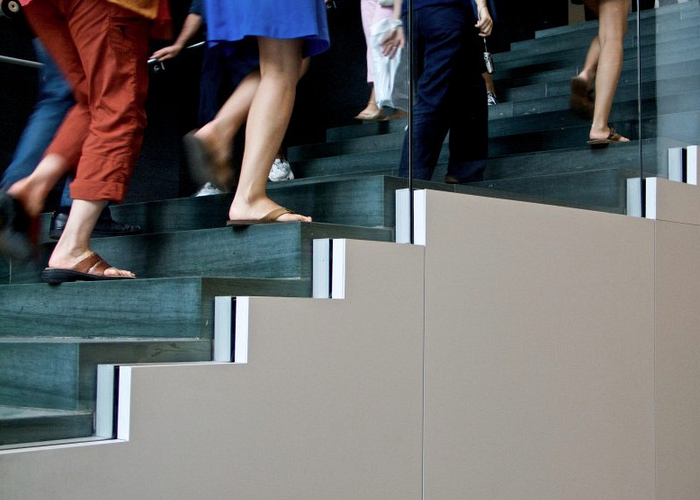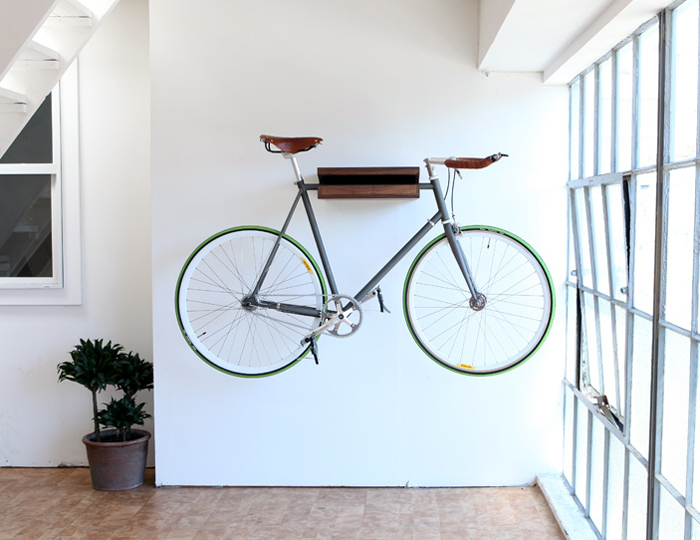 |
Sculptural staircases like this one designed by Tetrarc Architects, may entice people to use the stairs rather than the elevator. Often a conversation piece, stairs such as this can become a magnet for positive social interaction.
It’s not news that our population is becoming increasingly overweight and unhealthy due to lack of activity. In response to this, there is a trend towards healthy eating and increased promotion of exercise. Ironically enough, TV shows such as Jamie Oliver’s Food Revolution or The Biggest Loser endorse this healthier lifestyle. But what if the promotion of healthy living was slightly more subliminal, by way of design if you will? Would we predict a rise in the health of a community? You betcha! This sector of Interior Design and Architecture, termed ‘active design’ is a growing industry trend and for good reason.

This staircase, located at the Museum of Modern Art, uses clear glass, large wide treads, and a visible location to entice visitors to avoid the elevator. Photo credit: Cornelis Verwaal.
According to Dr. Karen Lee, director of New York City’s Bureau of Chronic Disease Prevention and Control, Interior Designers can have a major impact on the health of a community. In fact, the City of New York actually went to the length of creating Active Design Guidelines to direct design professionals in making decisions that encourage physical activity and foster well-being (example: taking the stairs vs. using the elevator).
How can Interior Designers aid in promoting healthy living?
Attractive Circulation
Corridors and stairs should be centrally situated, easily located, spacious, inviting, and filled with natural light. By making hallways and stairwells more inviting and safe, people are more likely to use them. In fact, if designed well, circulation spaces can actually be areas for social engagement. Furthermore, elevators can be made less enticing by use of slower, more inconvenient technologies.
Meaningful Spaces
As designers we should promote the application of ‘healthy’ features such as water fountains (reducing the intake of unhealthy beverages), or green outdoor gardens. To entice users to frequent those areas, Interior Designers should highlight passageways to water fountains or outdoor living spaces in an aesthetically appealing manner.
 |
Offering places to store bikes and areas to change and shower in commercial interiors often facilitates a healthy lifestyle as employees are more inclined to ride to work.
Accessible Nutrition
Areas such as gymnasiums, cafeterias, or staff rooms should be stocked with nutritional food options to make eating healthy convenient. Such spaces should also be situated centrally so they are easier to access, should have outdoor views, and should be flexible to accommodate a variety of users.
Activity Support
The commercial Interior Design community has the ability to foster and support active living by incorporating access to outdoor spaces with terraces or covered areas, introducing bike racks or bike storage, and providing showers for staff members.
For more information via the whitepaper Active Design written by Katherine Vansittart click here.
For more information via NY City’s Active Design Guidelines click here.
» Do your clients and staff deserve a healthier workplace? We can help! Contact Hatch Interior Design located in Kelowna, British Columbia - Sustainable Interior Design Solutions for the Modern Workplace.